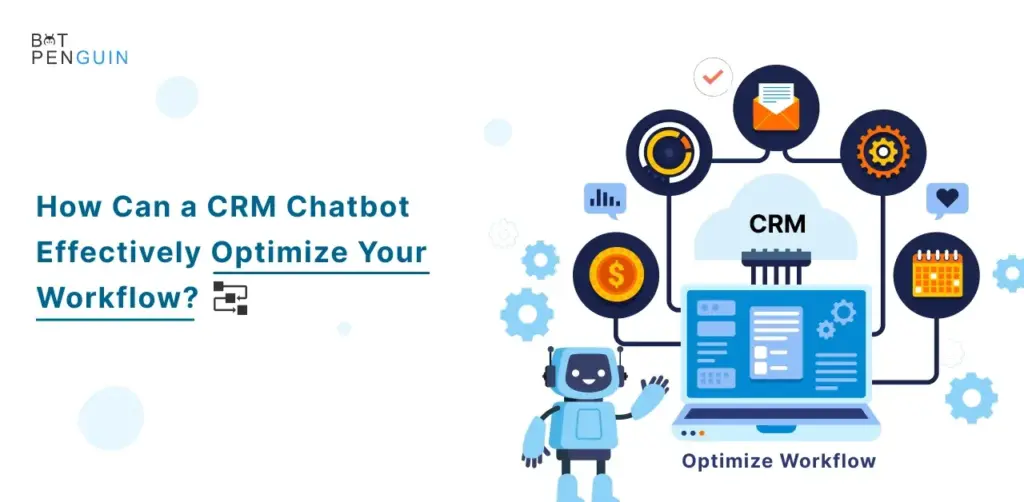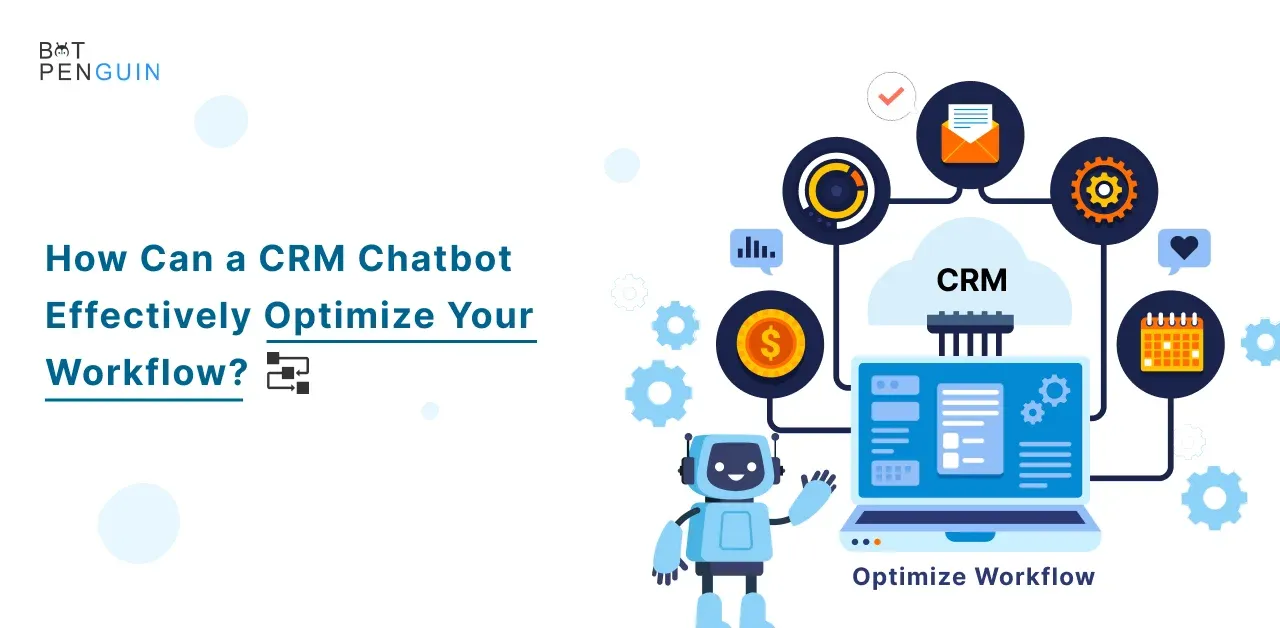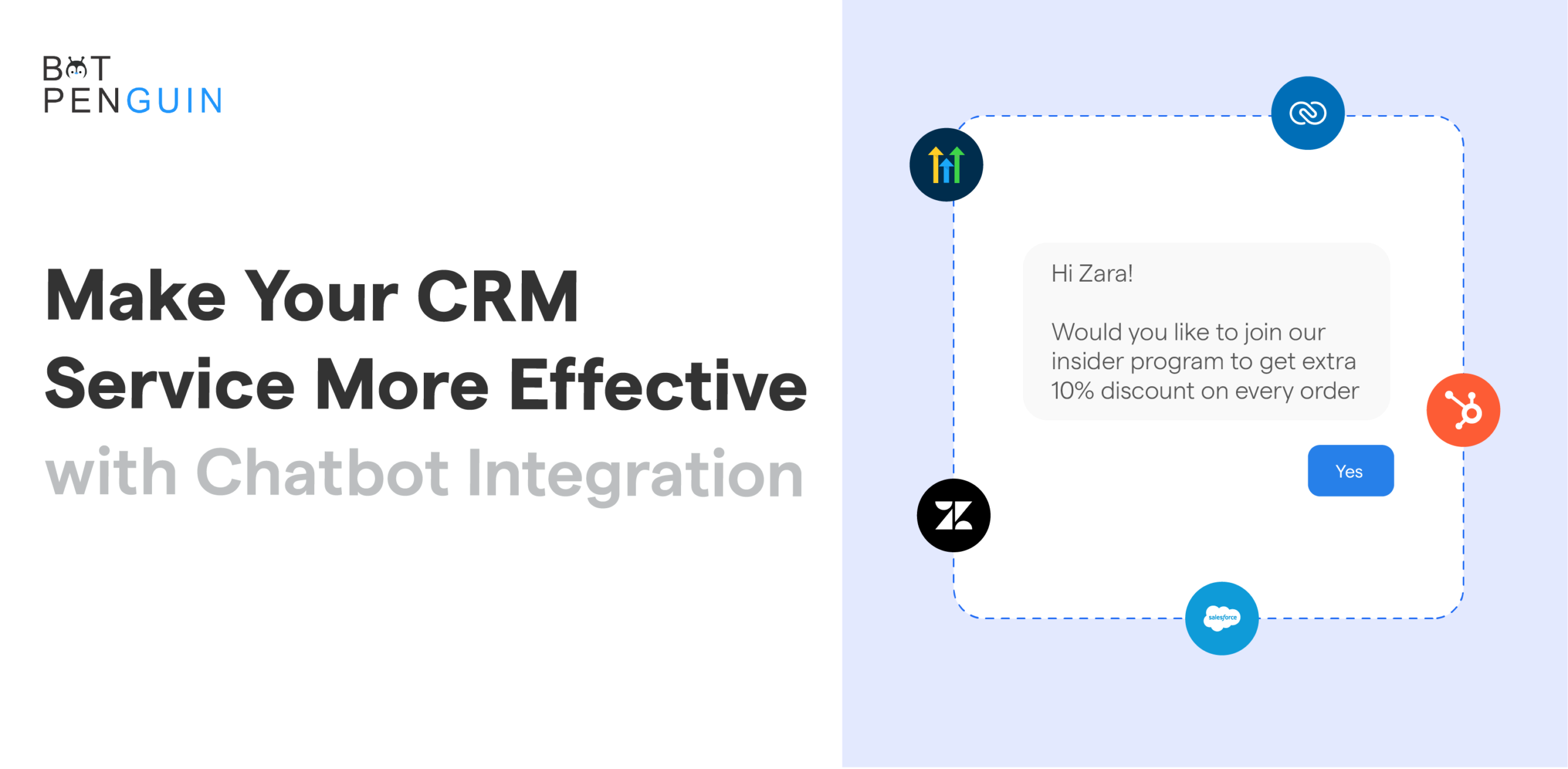
Unlocking the Power of CRM Marketing Chatbot Integration
In today’s fast-paced digital landscape, businesses are constantly seeking innovative ways to connect with their customers, streamline operations, and boost marketing effectiveness. One of the most promising strategies emerging is the integration of Customer Relationship Management (CRM) systems with marketing chatbots. This powerful combination allows companies to automate interactions, personalize customer experiences, and gain valuable insights into customer behavior. But what exactly is CRM marketing chatbot integration, and why is it so crucial for modern businesses? Let’s dive deep to explore this transformative technology.
What is CRM Marketing Chatbot Integration?
At its core, CRM marketing chatbot integration involves connecting your CRM system with a chatbot platform. This integration enables the chatbot to access and utilize customer data stored within the CRM, allowing for more personalized and efficient interactions. Essentially, it merges the data-rich environment of your CRM with the real-time, conversational capabilities of a chatbot. This synergy creates a potent tool for marketing, sales, and customer service.
Understanding the Components: CRM and Chatbots
To fully grasp the concept, it’s important to understand the individual components:
- CRM (Customer Relationship Management): This is a system designed to manage all your interactions with current and potential customers. It stores data like contact information, purchase history, communication logs, and more. Popular CRM platforms include Salesforce, HubSpot, Zoho CRM, and Microsoft Dynamics 365.
- Chatbot: A chatbot is a computer program designed to simulate conversation with human users, especially over the Internet. Chatbots can be rule-based (following pre-defined scripts) or AI-powered (using natural language processing to understand and respond). They are typically deployed on websites, messaging apps, and social media platforms.
When these two are integrated, the chatbot can access customer data from the CRM, personalize conversations, and trigger actions based on that data. For example, a chatbot can greet a returning customer by name and recommend products based on their past purchases.
Benefits of CRM Marketing Chatbot Integration
The advantages of integrating your CRM with a chatbot are numerous and impactful. Here are some of the key benefits:
Enhanced Customer Experience
Personalization is key to a positive customer experience. CRM-integrated chatbots can:
- Personalize Interactions: Greet customers by name, remember their past interactions, and tailor responses to their specific needs.
- Provide Instant Support: Offer 24/7 availability to answer questions, resolve issues, and guide customers through their journey.
- Proactively Engage: Initiate conversations based on customer behavior, such as abandoned carts or website browsing history.
Improved Lead Generation and Qualification
Chatbots can be invaluable tools for lead generation and qualification:
- Capture Leads: Collect contact information and qualify leads through interactive conversations.
- Qualify Leads: Ask qualifying questions to determine the lead’s needs and fit for your products or services.
- Route Leads: Automatically route qualified leads to the appropriate sales representatives or departments.
Increased Sales and Revenue
By streamlining the sales process and providing personalized recommendations, chatbots can boost sales:
- Recommend Products: Suggest products or services based on customer preferences, purchase history, or browsing behavior.
- Guide Customers Through the Sales Process: Answer questions, provide product information, and assist with the purchase.
- Reduce Cart Abandonment: Remind customers about abandoned carts and offer incentives to complete the purchase.
Automated Tasks and Increased Efficiency
Chatbots automate repetitive tasks, freeing up your team to focus on more strategic initiatives:
- Automate Customer Service: Answer frequently asked questions, resolve common issues, and handle basic support requests.
- Schedule Appointments: Allow customers to schedule appointments directly through the chatbot.
- Update Customer Information: Enable customers to update their contact information or preferences.
Data-Driven Insights and Reporting
CRM-integrated chatbots provide valuable data and insights:
- Track Customer Interactions: Monitor chatbot conversations to identify customer needs, pain points, and preferences.
- Analyze Conversation Data: Analyze chatbot data to improve chatbot performance, refine marketing strategies, and optimize customer experience.
- Generate Reports: Create reports on key metrics like lead generation, sales conversions, and customer satisfaction.
Key Features of a CRM-Integrated Chatbot
To maximize the benefits, your CRM-integrated chatbot should possess certain key features:
- Seamless Integration: The chatbot should seamlessly integrate with your CRM system, allowing for real-time data synchronization.
- Personalization: The chatbot should be able to personalize interactions based on customer data from the CRM.
- Natural Language Processing (NLP): The chatbot should utilize NLP to understand and respond to customer queries effectively.
- Multi-Channel Support: The chatbot should be available on multiple channels, such as your website, Facebook Messenger, and WhatsApp.
- Reporting and Analytics: The chatbot should provide detailed reports and analytics on key metrics.
- Workflow Automation: The chatbot should be able to automate tasks, such as lead qualification and appointment scheduling.
How to Implement CRM Marketing Chatbot Integration
Implementing CRM marketing chatbot integration involves several key steps:
- Choose a CRM Platform: Select a CRM platform that meets your business needs.
- Choose a Chatbot Platform: Select a chatbot platform that offers CRM integration capabilities.
- Plan Your Integration: Define your goals, identify the data you want to share, and map out the customer journey.
- Integrate the Systems: Connect your CRM and chatbot platform using APIs or integration tools.
- Design and Develop Your Chatbot: Create a chatbot that aligns with your brand and meets your business objectives.
- Test and Deploy: Thoroughly test your chatbot before deploying it to your target audience.
- Monitor and Optimize: Continuously monitor your chatbot’s performance and make adjustments as needed.
Best Practices for Successful Integration
To ensure a successful CRM marketing chatbot integration, follow these best practices:
- Define Clear Objectives: Determine your goals and what you want to achieve with the integration.
- Focus on Customer Needs: Design your chatbot to provide value and solve customer problems.
- Keep It Simple: Make your chatbot easy to use and navigate.
- Personalize Interactions: Use customer data to personalize conversations and recommendations.
- Provide Human Handover: Offer the option to connect with a human agent if needed.
- Monitor and Analyze Performance: Track key metrics and make adjustments to improve performance.
- Train Your Team: Provide training to your team on how to use the integrated system effectively.
Choosing the Right Chatbot and CRM Platforms
The success of your integration hinges on selecting the right platforms. Consider the following when choosing a CRM and chatbot platform:
CRM Platform Considerations
- Scalability: Does the CRM platform scale to meet your growing business needs?
- Features: Does the CRM offer the features you need, such as contact management, sales automation, and reporting?
- Integration Capabilities: Does the CRM integrate with other tools and platforms, including chatbots?
- Pricing: What is the pricing structure, and does it fit your budget?
- Ease of Use: Is the CRM user-friendly and easy to learn?
Chatbot Platform Considerations
- CRM Integration: Does the chatbot platform offer seamless integration with your CRM platform?
- Natural Language Processing (NLP): Does the chatbot use NLP to understand and respond to customer queries?
- Customization: Can you customize the chatbot to match your brand and business needs?
- Multi-Channel Support: Does the chatbot support the channels you need, such as your website, Facebook Messenger, and WhatsApp?
- Reporting and Analytics: Does the chatbot provide detailed reports and analytics?
- Pricing: What is the pricing structure, and does it fit your budget?
- Ease of Use: Is the chatbot platform easy to use and manage?
Examples of CRM Marketing Chatbot Integration in Action
Let’s look at some real-world examples of how businesses are leveraging CRM marketing chatbot integration:
E-commerce
An e-commerce company integrates its CRM with a chatbot to:
- Recommend products based on customer purchase history.
- Answer questions about shipping and returns.
- Provide order tracking information.
- Offer personalized discounts and promotions.
- Recover abandoned carts by sending reminders and offering incentives.
Healthcare
A healthcare provider integrates its CRM with a chatbot to:
- Schedule appointments.
- Answer questions about insurance coverage.
- Provide information about medical conditions.
- Send appointment reminders.
- Collect patient feedback.
Financial Services
A financial services company integrates its CRM with a chatbot to:
- Answer questions about financial products and services.
- Provide account balance information.
- Process loan applications.
- Offer financial advice.
- Generate leads by qualifying potential customers.
Future Trends in CRM Marketing Chatbot Integration
The landscape of CRM marketing chatbot integration is constantly evolving. Here are some future trends to watch:
- AI-Powered Chatbots: Expect to see more advanced AI-powered chatbots that can understand and respond to complex queries.
- Hyper-Personalization: Chatbots will increasingly personalize interactions based on individual customer data and preferences.
- Proactive Engagement: Chatbots will become more proactive in engaging customers and anticipating their needs.
- Integration with Emerging Technologies: Chatbots will integrate with other emerging technologies, such as voice assistants and augmented reality.
- Increased Focus on Data Privacy: Businesses will prioritize data privacy and security when implementing chatbot integrations.
Overcoming Challenges in CRM Marketing Chatbot Integration
While the benefits are significant, some challenges can arise during CRM marketing chatbot integration:
- Data Privacy and Security: Protecting customer data is paramount. Ensure your chatbot platform complies with data privacy regulations.
- Integration Complexity: The integration process can be complex and require technical expertise.
- Chatbot Training and Maintenance: Training and maintaining a chatbot can require ongoing effort.
- Customer Acceptance: Some customers may be hesitant to interact with a chatbot.
- Measuring ROI: It can be challenging to accurately measure the ROI of CRM marketing chatbot integration.
To overcome these challenges:
- Prioritize Data Security: Implement robust security measures to protect customer data.
- Seek Expert Assistance: Consider working with a consultant or development team.
- Provide Ongoing Training: Continuously train and update your chatbot to ensure it meets customer needs.
- Educate Customers: Inform customers about the benefits of using the chatbot.
- Track Key Metrics: Monitor key metrics to measure the impact of the integration.
Conclusion: Embracing the Future of Marketing
CRM marketing chatbot integration is revolutionizing the way businesses interact with their customers. By combining the power of CRM systems with the conversational capabilities of chatbots, companies can personalize customer experiences, automate tasks, and gain valuable insights. As technology continues to evolve, CRM marketing chatbot integration will become even more crucial for businesses looking to stay competitive and thrive in the digital age. Embrace this powerful combination and unlock the future of marketing.


